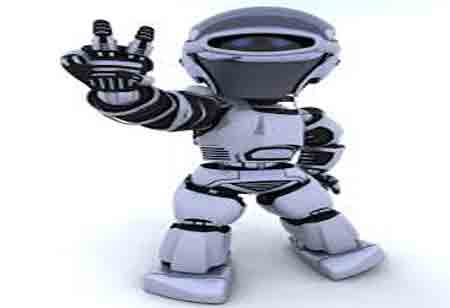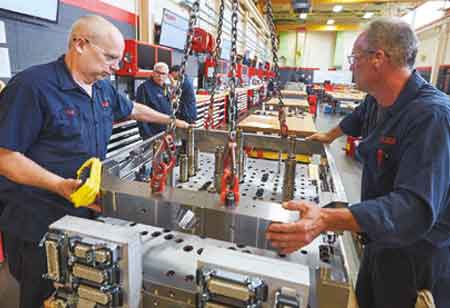THANK YOU FOR SUBSCRIBING

Safeguarding Frontline Construction Workers Using AI and Robotics
Georgina North, Head Of Technology & Innovation, Laing O’rourke

 Georgina North, Head Of Technology & Innovation, Laing O’rourke
Georgina North, Head Of Technology & Innovation, Laing O’rourkeGeorgina North has amassed a considerable experience in construction flow assurance and onsite safety during her long stint as the Head of Technology & Innovation at Laing O’Rourke. Her deep-rooted knowledge of the brewing challenges faced by frontline construction workers and solutions to alleviate them has made her a well-known name in the construction industry.
In an interview with Construction Tech Review APAC, Georgina North sheds light on some of the impending challenges prevailing in construction safety management and how AI and robotics can be game changers in achieving worker safety.
Could you give me a brief overview of the current scenario in the construction space and how technology and innovation would be a determinant in shaping the future of this industry?
There are a lot of crucial technology stacks that play a vital role in the construction and are becoming more pertinent ever since. These include the likes of advanced manufacturing, robotics and automation, digital products, AI, data analytics, and advanced materials. These technologies are pushing the boundaries of what’s possible for construction today and paving the way for businesses to envision the future of construction.
What are some of the prevalent pain points the clients face that are impacting the industry lately regarding construction safety?
Construction sites globally are inherently unsafe. The frontline workers have been risking their lives since time immemorial, 28 making safety the cardinal issue in this industry. Ensuring complete protection in an industry like construction always needs to be a company’s first and foremost principle. Many companies have taken to implement holistic safety frameworks cataloged with all the severe and fatal risks. Though the risks involved and subsequent frameworks differ in a live construction site compared to a factory, some frequently identified risks include working from heights and electrification.
The frontline workers have to work in a dynamic range of overlapping activities on a construction site that sees big heavy machinery with lots of moving parts and volatile alterations. This is the focal reason to ensure worker safety. Ensuring safety does not only fall on safety personnel. Still, it is the radical responsibility of everyone, from leadership roles to frontline workers. Safety is not only limited to the physical barriers and processes on the sites but is also about workplace behavior, which is a major challenge for the industry.
What are some of the upcoming technologies or practices that could streamline construction safety strategies?
The first strategy would be digital products. Streamlining processes makes it easier to follow and put to use, just like your iPhone. Streamlining safety protocols, behaviors, and other information would make the process seamless for construction safety. Digital products can proffer safety methodologies using SaaS and other deep technologies to enhance safety culture and behavioral change.
The following strategy would probably involve using AI recognition for computer vision and reality capture. A proper understanding of your site can be achieved by creating a visual scan and recognizing the impending hazards, probable exclusion zones, and safety barriers. It would be far more convenient to visually communicate the physical spaces and the associated safety protocols on the 3D models and detailed photogrammetry of the construction site. Collaborations with AI companies would help the industry identify blind spots on the site through sensing and perception tools. Thorough alerts through wearables and cabin lights would help enable critical assessments and interventions, ensuring worker safety.
" Safety is not solely the responsibility of construction safety professionals but everyone, right from leadership down to the frontline workers. It is not merely about maintaining safety with regards to the various equipment at construction sites but about developing a consistent safety culture, which itself is a big challenge in the industry "
Construction companies tend to amass substantial safety data over past incidents and reports that can be streamlined using digital products. Integrating AI, machine learning, and statistical analysis with your database can help you gain a deeper contextual understanding of the day-to-day activities at the site. This will help understand the higher incident rates during particular activities, locations, and times of the day from a data perspective. Using NLP for construction safety is a great way to understand lower-grade non-fatal and severe risks that would otherwise go unnoticed.
The last strategy would be an increase in the degree of modularity and offsite manufacturing. This is a more extended play, but it changes how we do construction. For example, we take a bridge and break it down into modular pre-cost offsite manufacturing components for more repeatability that would inadvertently call for more repeatable safety controls.
What advice would you offer to an upcoming leader in the construction safety field to position themselves better to address the challenges effectively?
There are three principles that a leader in the construction safety field ought to abide by – people, process, and products. As a leader, your first and foremost responsibility is safeguarding the workers and their behavior and instincts. Streamlining processes makes people’s lives easier and far more efficient. With the surge in the latest technologies, leaders should be on the lookout to scrutinize and assess the tech stack provided by the technology providers to see what is fit for constructional workflows.
Is there anything you wish to add or highlight regarding construction safety?
One of the most recent innovations coming into construction safety is the inclusion of robotics and automation. Robotics offers immense advancement in construction safety by replacing people from the line of fire. Robotics are already being implemented in mining and agricultural industries, and it’s just a matter of time before robotics make considerable strides in the construction industry for better precision and remote autonomous control. Robotics and automation hold the key to future construction safety, and it’s only a matter of time before it gets incorporated into the construction business.
Read Also

















ON THE DECK